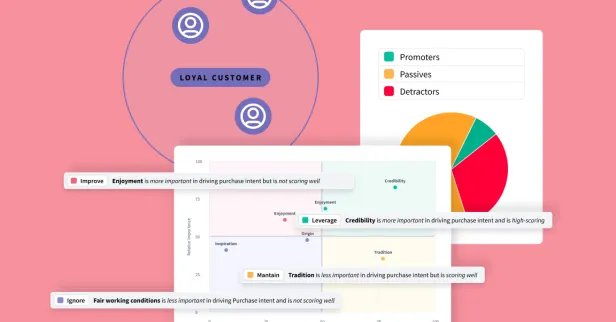No matter the type of study you run, the ultimate goal of your research is to better understand how a population thinks and behaves. That population could be your customer base, shoppers in your category, or customers loyal to your competitors.
To get accurate data about that population, you have to round up a sample of respondents who accurately reflect them.
Sometimes, whether due to sampling error or other factors, there is a misalignment between your target population and your study’s sample. When this happens, you can use weighting to correct the course. Find out how:
What is Weighting? And Why Should I Use it?
In market and consumer research, we gather data from a sample of a given population to make judgments about the whole. But sometimes, that data becomes skewed when certain segments are over- or under-represented within the sample.
Weighting survey or experiment data is a technique used to bring your sample in line with the population you are trying to study. You can do this by giving more or less “weight” to specific segments within your sample.
For example, let’s say your target audience is the general population of the United States. While you set your audience quotas to match the latest census data, you notice that the number of men who have responded to the survey is low. If you’re unable to get more men to complete your survey, you can weight the data from those who did complete your survey, making their data more evenly represented.
Ideally, the market and consumer research data you collect will be from a sample that accurately reflects your target audience. But when there are discrepancies between the two, weighting is an incredibly useful alternative to re-running a project or losing valuable data.
Types of Weighting
When it comes to weighting, you have a few options depending on your needs:
Cell-Based Weights
With this weighting methodology, you can specify the weight/multiplier for each specific group in your sample. You can calculate your multiplier by dividing the population [desired state] by your sample.
For example, let’s say you survey 100 respondents, 80% are plant-based eaters and 20% are omnivores. You know that only 30% of your target population is plant-based. So, it’s fair to assume that the overall results will be biased due to the inaccurately large representation of plant-based eaters.
With cell-based weighting, it’s a simple fix! If you know that only 30% of your target population is plant-based, and 70% are meat-eaters then the weights you would apply to your data set would be:
Plant-based: 30/80 = 0.375
Meat-eaters: 70/20= 3.5
RIM/ Raking Weights (Random Iterative Method)
This technique is used when you need to weight multiple variables that overlap. Using this technique, you define the audience variables and their distribution, letting the software iteratively adjust the weights for each case until the sample distribution matches the audience parameters you set.
For example, let’s say you know that your target audience should be 48% male and 52% female, 40% should have a high school education or less, 31% should have completed some college, and 29% should be college graduates.
If your sample was misaligned to this audience, raking weights would be applied to correct the gender distribution of the sample. Next, the weights would be re-adjusted so that the education groups are in the correct proportion. If the adjustment for education pushes the gender distribution out of alignment, then the weights are adjusted again to correct it. The process is repeated until the weighted distribution of all variables matches their specified targets.
Weighting with SightX
The SightX platform is the only tool you'll ever need for market research: a single, unified solution for consumer engagement, data collection, advanced analysis, and reporting. While powerful enough for insights teams at Fortune 500 companies, the user-friendly interface makes it simple for anyone to start, optimize, and scale their research.
And with our new Generative AI consultant, Ada, you can harness the power of OpenAI’s GPT to transform your marketing research and insights. Collaborating with Ada is like having an expert researcher, brilliant statistician, and ace marketer on your team, helping you ask the right questions, choose the best experiments, pick out key insights, and seamlessly apply them to your business.
If you're ready to dive in click the button below to get started for free!
